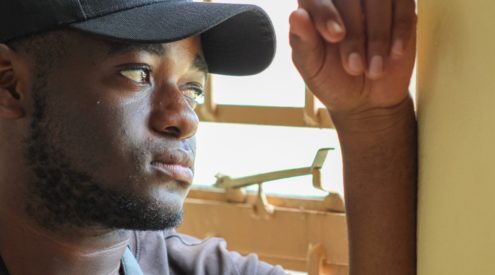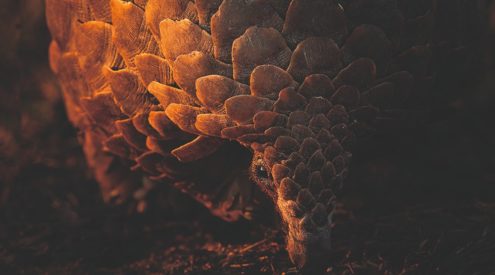Footage of a great white shark hunting a humpback whale along the Mossel Bay coast has garnered much attention. It is the first time a great white hunting a large whale has ever been documented.
The now-famous great white shark, named Helen, was initially tracked by marine biologist and National Geographic shark expert Ryan Johnson, along the coast of South Africa as part of a previous study.

Ryan Johnson preparing his drone.
Recalling the recent event, Johnson told Getaway Magazine: ‘The NSRI had been alerted to a whale carcass floating off the point of Mossel Bay. I was notified to either do some research or document it. I decided to document it with my drone believing I would film white sharks feeding off a whale carcass. But when I arrived, the whale was alive but in a very weakened state.’
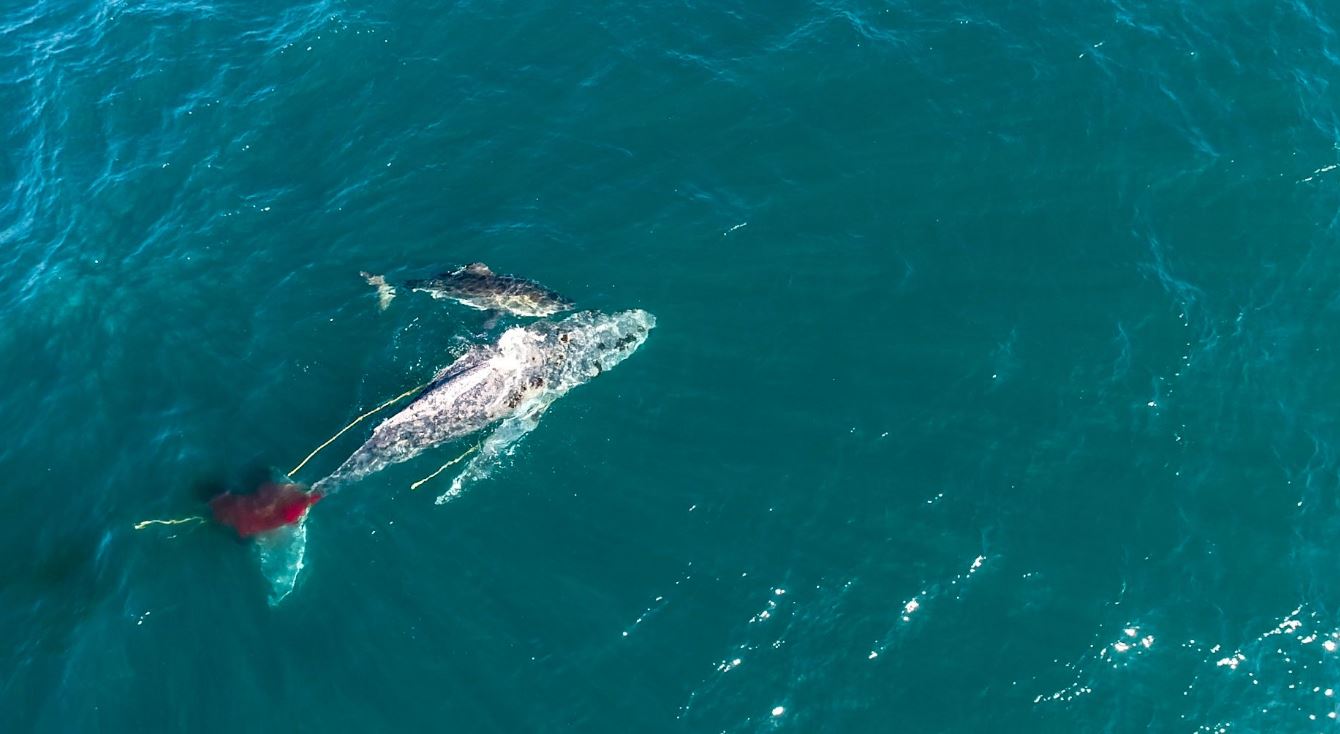
Helen and the whale.
This is when he decided to start filming the predatory event between Helen and the humpback whale.
‘The whale had remnants of a long line wrapped on its tail and pec fins, and also its skin was very blotchy, pale, and had large infestations of barnacles in areas not typically associated with humpback whales (e.g. the dorsal fin and back). Also, the whale was passing through Mossel Bay in February, some three months after the main pulses of humpbacks pass through Mossel Bay on their return migration to Antarctica. All this suggested this was a very vulnerable and weakened whale that had become separated from the main body of whales migrating to Antarctica,’ Johnson explained.
Johnson said he expects Helen initially targeted the tail region and managed to open a vein or artery which caused the whale to begin bleeding out. Thereafter, she moved her attention to the whale’s head, which she latched onto without biting off the meat.
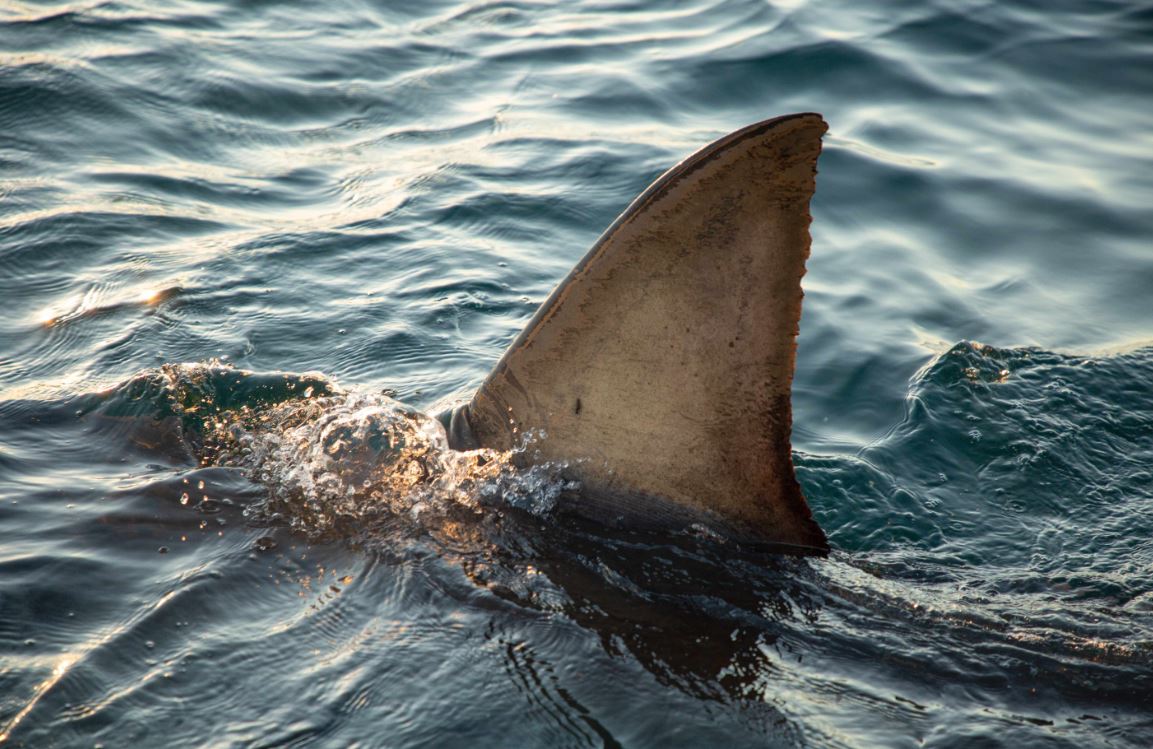
Helen’s dorsal fin.
‘This would definitely be consistent with an attempt to drown the whale. Ultimately the whale died from drowning due to weakness (blood loss) and the efforts form Helen to hold the head and blowhole underwater,’ Johnson confirmed.
According to him, the footage captured is the first of its kind. ‘This was the first time a great white hunting a large baleen whale had ever being documented, and during my research, I only found one report of another observation of an attack, and despite trying I could not verify this report,’ said Johnson.
Johnson went on to say that Helen was merely doing what she is meant to do, which is to remove the weak from nature. However, he emphasised that the reason this whale was weak and vulnerable was due to humans loading the ocean with nets and lines over the migratory pathway of the humpback whales.
‘The extent of humpback whales getting entangled nets or longlines is really really high, up to 78% of individuals in some populations. As a species, their long pecs and knobby skins make them really vulnerable to getting wrapped up. However, as they follow predictable migratory pathways, humans know where they are going to be and when they are going to be there. So, we can readily mitigate our impact on them if we choose,’ he said.
Watch the documentary, ‘Shark vs Whale’, on National Geographic this Friday at 6pm as part of National Geographic’s annual Sharkfest. It was filmed by an entirely South African crew.

Drone footage of Helen.
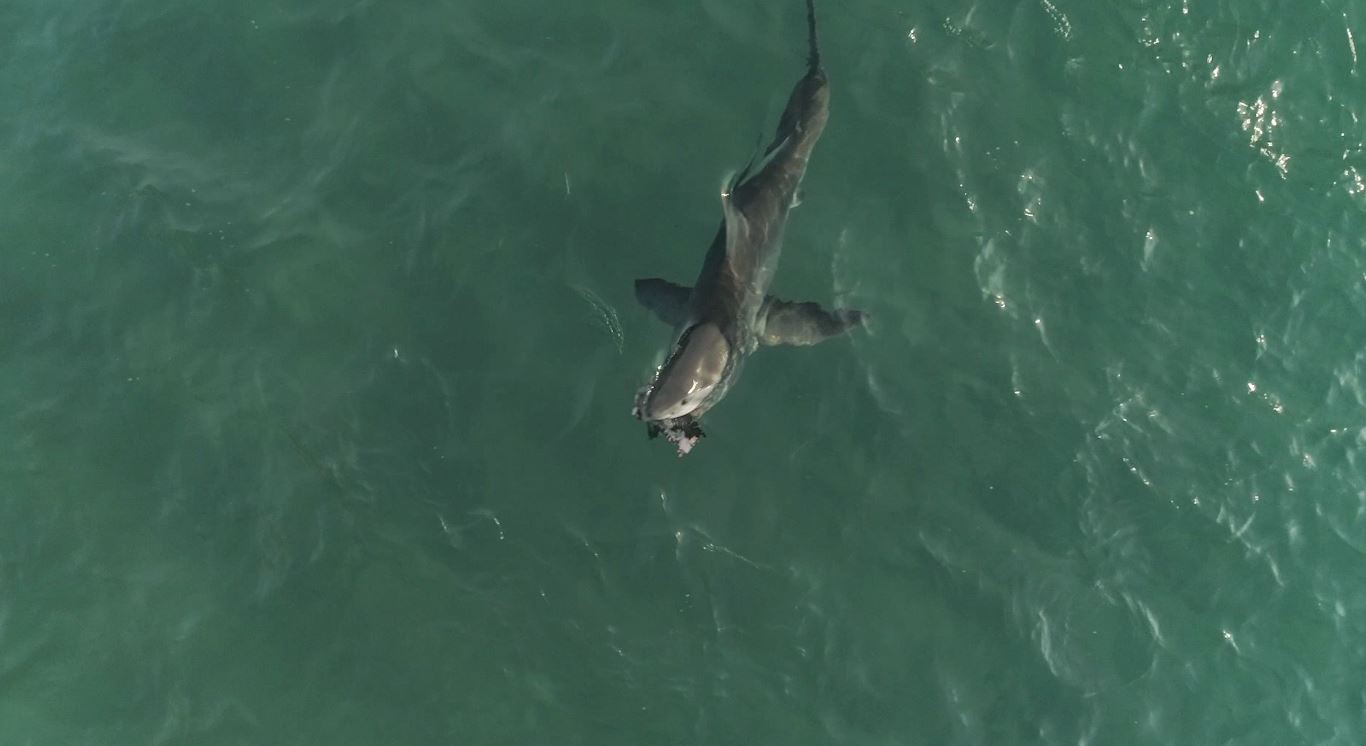
Helen is no small shark!
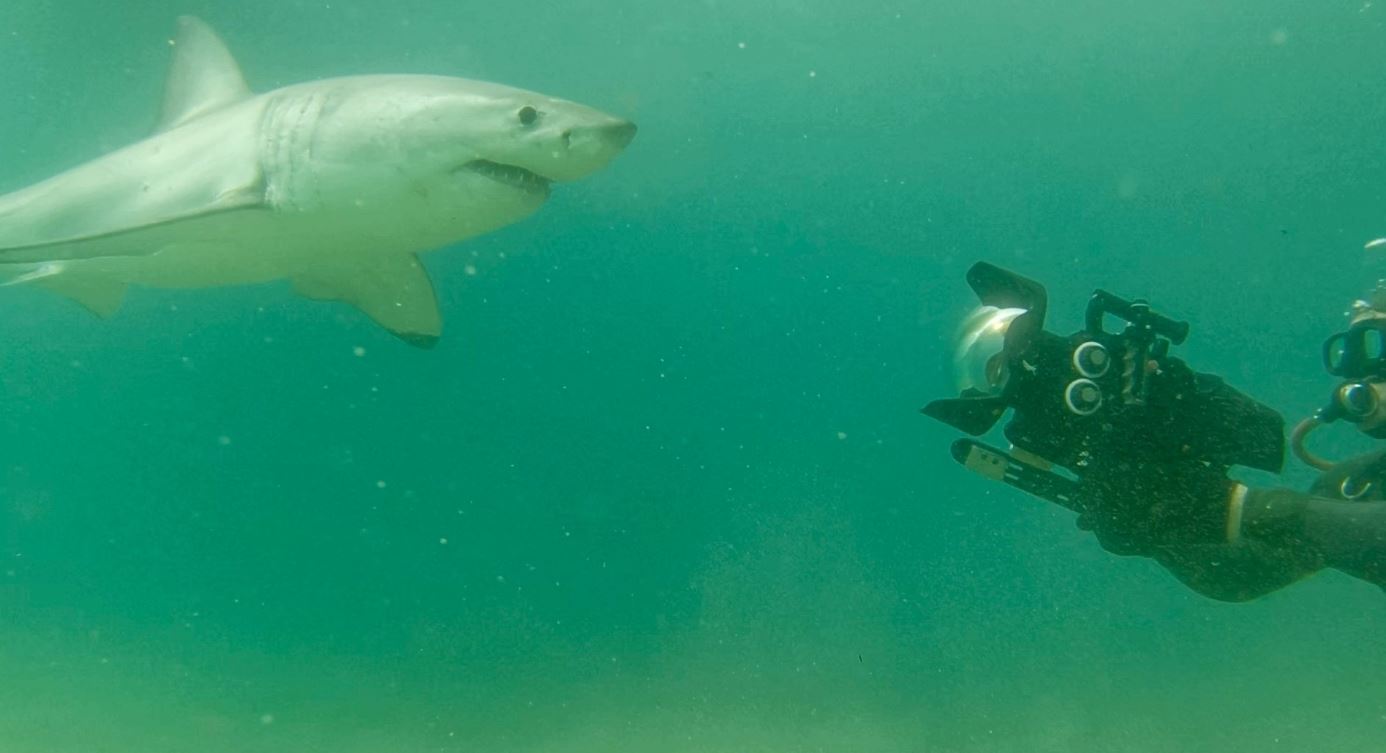
Underwater close-up shot.
Also read:
Image credit: National Geographic

















